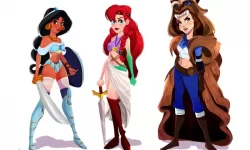Embracing Diversity: A Journey Through Literature and Media
Introduction:
Literature and media play crucial roles in shaping societal perceptions and values. In recent years, there has been a growing recognition of the importance of diversity and representation in these forms of storytelling. This article delves into the significance of diversity in literature and media, examining its impact on audiences and the strides being made towards more inclusive storytelling.
- The Importance of Representation:
- Representation matters. Seeing oneself reflected in literature and media validates one’s experiences and identities, fostering a sense of belonging and empowerment, especially for marginalized communities.
- Conversely, the lack of diverse representation can perpetuate stereotypes, erasure, and underrepresentation, contributing to feelings of alienation and invisibility among marginalized groups.
- Diversity in Literature:
- Diverse literature encompasses narratives that reflect the myriad of human experiences, including race, ethnicity, gender, sexuality, disability, and socioeconomic background.
- Authors from diverse backgrounds bring unique perspectives and voices to storytelling, enriching the literary landscape and challenging dominant narratives.
- Initiatives such as #OwnVoices, which promotes stories written by authors who share the identities of their characters, have gained momentum, amplifying diverse voices and stories.
- Diversity in Media:
- In media, diversity extends beyond representation on screen to include diversity behind the scenes, including writers, directors, producers, and executives.
- Increasingly, media platforms are recognizing the demand for diverse content and investing in inclusive storytelling. Television shows, films, and streaming platforms are featuring diverse casts and storylines that reflect the complexity of human experiences.
- However, challenges persist, including whitewashing, tokenism, and the perpetuation of harmful stereotypes. Genuine representation requires authentic portrayals and meaningful engagement with diverse communities.
- Impact on Audiences:
- Diverse representation in literature and media has a profound impact on audiences, fostering empathy, understanding, and cultural appreciation.
- Exposure to diverse narratives broadens perspectives, challenges biases, and encourages critical thinking. It can also inspire individuals to advocate for social justice and equity.
- For marginalized audiences, seeing themselves represented positively in literature and media can be empowering, validating their identities and experiences.
- Promoting Diversity in Publishing and Production:
- Publishers and media companies have a responsibility to prioritize diversity and inclusion in their acquisitions, hiring practices, and content creation processes.
- Investing in diverse talent, supporting marginalized creators, and providing platforms for underrepresented voices are essential steps towards fostering a more inclusive industry.
- Readers and viewers also play a role by actively seeking out diverse content, supporting diverse creators, and advocating for systemic change within the industry.
1. Reflecting Diverse Voices in Literature:
– Diversity in literature encompasses a broad spectrum of experiences, including race, ethnicity, gender, sexuality, disability, and socioeconomic background. By amplifying diverse voices, literature becomes a powerful tool for fostering empathy, understanding, and connection.
– Authors from marginalized communities offer unique perspectives and insights that challenge dominant narratives and expand readers’ worldviews. Their stories illuminate the complexities of identity, privilege, and resilience, resonating with readers across cultural boundaries.
2. The Evolution of Representation in Media:
– In mainstream media, representation has historically been limited, perpetuating stereotypes and marginalizing underrepresented groups. However, there has been a gradual shift towards more diverse and authentic portrayals in film, television, and digital media.
– From blockbuster movies to streaming platforms, diverse storytelling has gained traction, reflecting the diverse makeup of global audiences. Projects like Ava DuVernay’s “When They See Us” and Pixar’s “Coco” showcase the power of authentic representation in driving social change and cultural appreciation.
3. Intersectionality and Complex Identities:
– Intersectionality recognizes the interconnected nature of social identities, acknowledging that individuals may experience multiple forms of marginalization or privilege. Literature and media that embrace intersectionality delve into the complexities of identity, challenging monolithic narratives and celebrating diversity within diversity.
– Characters with intersectional identities offer nuanced representations that defy stereotypes and highlight the multifaceted nature of human existence. By embracing intersectionality, creators foster inclusivity and empower audiences to see themselves reflected in stories that resonate with their lived experiences.
4. Empowering Diverse Creators and Storytellers:
– Empowering diverse creators is essential for fostering authentic representation and dismantling systemic barriers within the publishing and entertainment industries. Initiatives that support marginalized writers, filmmakers, and artists amplify diverse voices and catalyze systemic change.
– Diversity in behind-the-scenes roles, including directors, producers, and executives, is crucial for driving inclusive storytelling from conception to production. By creating inclusive environments and opportunities, industries can harness the full spectrum of talent and creativity.
5. The Impact on Society and Future Directions:
– Diverse literature and media have the power to challenge stereotypes, foster empathy, and inspire social change. By amplifying marginalized voices and experiences, these mediums contribute to broader conversations about equity, justice, and representation.
– Moving forward, continued efforts to promote diversity and inclusion in literature and media are essential. This includes advocating for diverse representation in curricula, supporting diverse creators and content, and holding industries accountable for equitable practices.
Conclusion:
Diversity in literature and media is not just a matter of representation; it is a matter of social justice and equity. By embracing diverse voices and stories, we can create a more inclusive cultural landscape that reflects the richness and complexity of the world we inhabit. Through conscious efforts to promote diversity and representation, literature and media have the power to inspire, educate, and unite audiences across boundaries of race, ethnicity, gender, sexuality, and beyond.Exploring diversity in literature and media is not merely about ticking boxes or meeting quotas; it is about honoring the richness of human experience and creating a more inclusive and equitable world. By embracing diverse voices and stories, we enrich our collective narrative, foster empathy, and empower individuals to see themselves reflected in the stories that shape our shared humanity.







